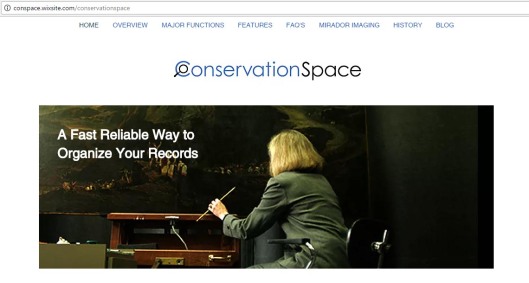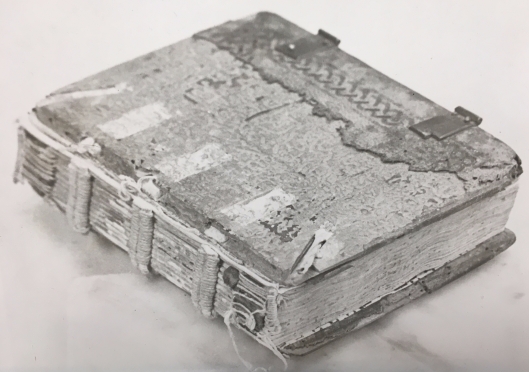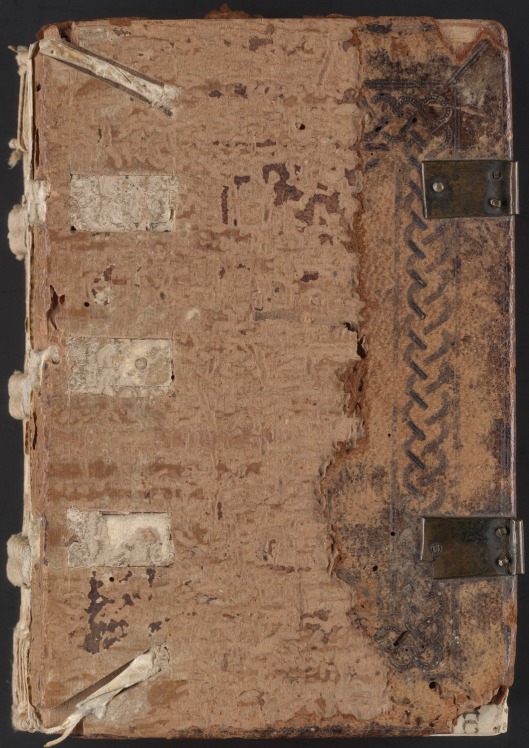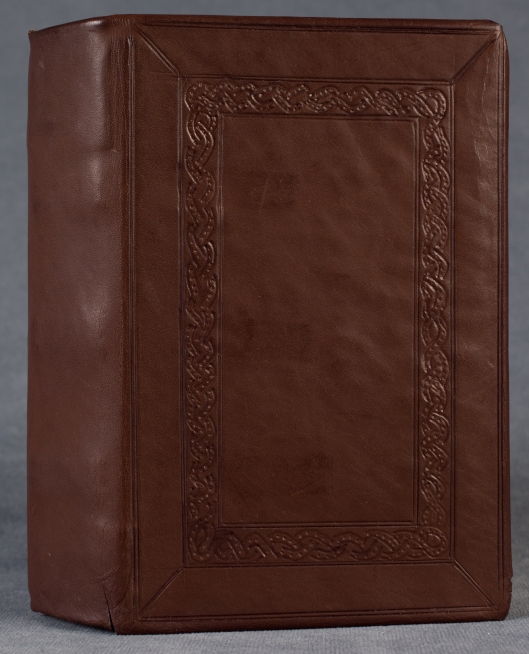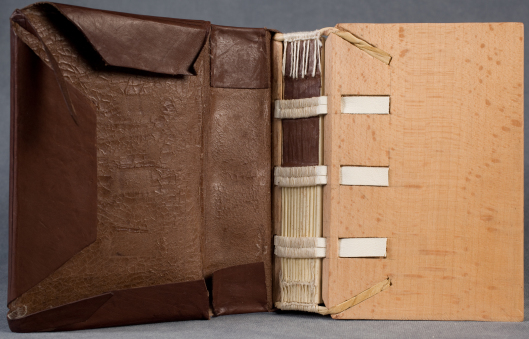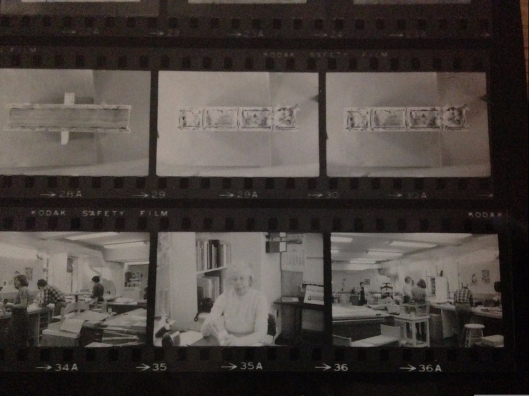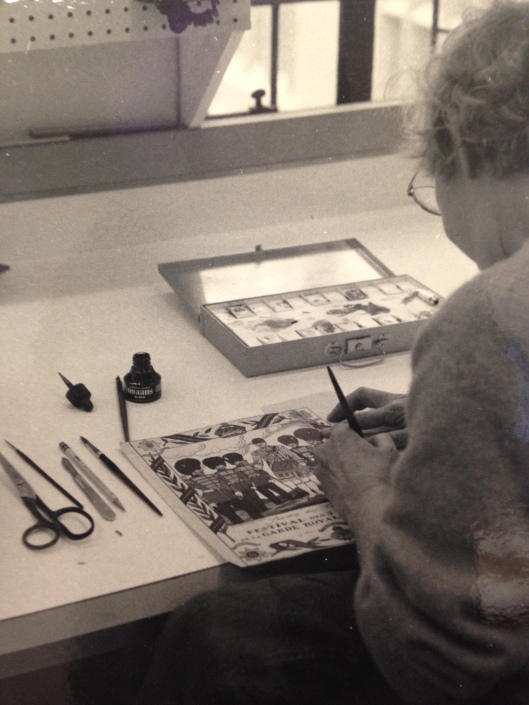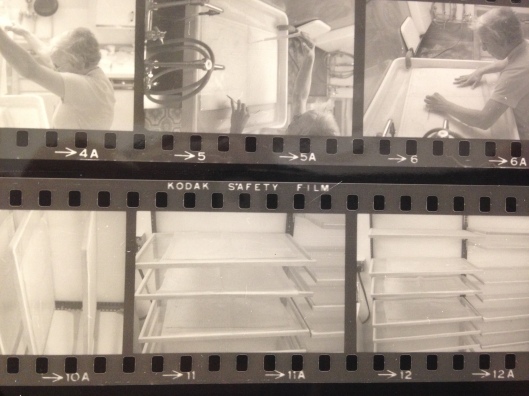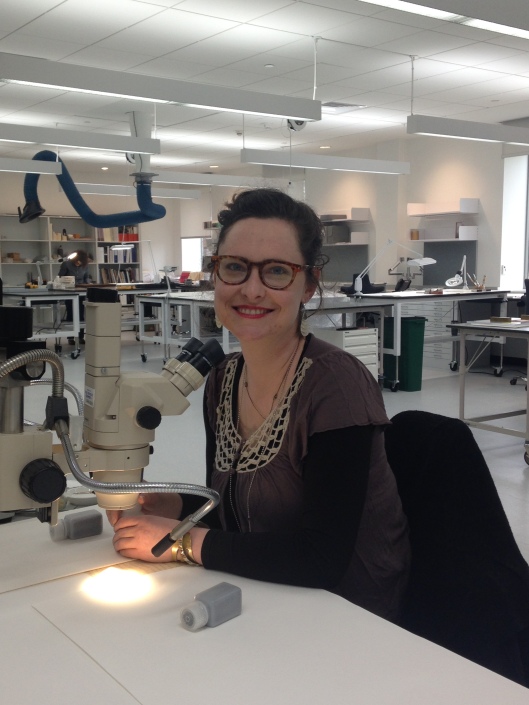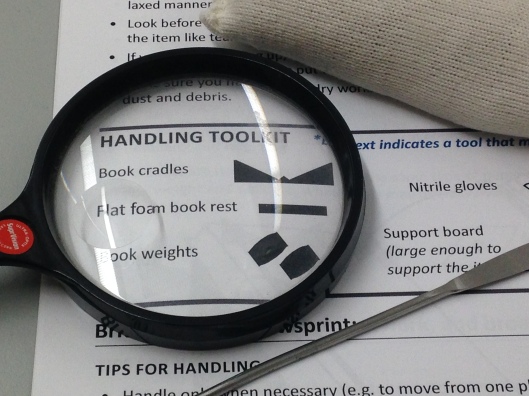From June through July, the Gates Conservation Lab hosted an undergraduate intern as part of a pilot program to expose students from the Historically Black Colleges and Universities to careers in libraries, in particular those in conservation and preservation. We enjoyed sharing what we do with our intern, Erin Matthews. Her enthusiasm and energy reminded all of us of why we chose to work in library conservation. Erin kept a journal during her 8 weeks at Yale. Erin and I worked together on planning a more effective strategy for our department’s social media presence. As part of that exploration, Erin wrote a post about her experiences at the Yale Library. Thank you, Erin. It was a pleasure to get to know you and be a part of your educational and career journey!
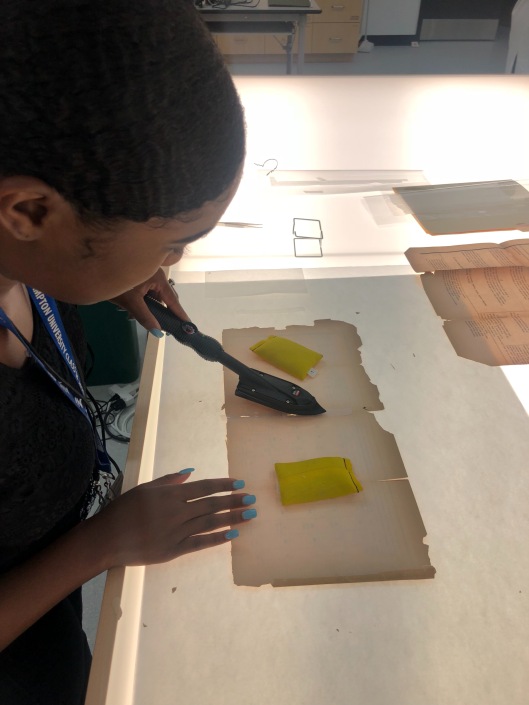
Erin mends a brittle broadside and map.
My name is Erin A. Matthews. I was born in Laurel, Maryland on September 6th, 1999. I currently live in Raleigh, North Carolina with my parents and sisters. Growing up in a household where I was the middle child, I always understood the importance of setting a better example for my younger sister and to learn from my older sister. My motivation to study Liberal Arts developed from wanting to make this world a better place for everyone. I knew excelling inside the classroom was not the only way I could contribute to the lives around me. I knew I had to challenge myself with information I’ve never seen before. In fact, I grew a deeper interest in the physical health, natural sciences and arts to develop a strong idea of how I could continue to build onto my future, as well as being observant about other careers I may not know about. Even though I am only a rising sophomore, I manage to myself with learning new things and gain new experiences and that’s what made this internship at Yale University’s Library Preservation interesting to me. I’ve never heard of preservation in a library and I was curious to find out more about it. At Hampton University I work in the main library shelving books. The library’s director encouraged me to apply to the summer preservation internship program and I was placed at Yale. In June I arrived in New Haven to begin working in the Stephen F. Gates Conservation Laboratory in the Yale University Library.
My experience working in the Gates lab has been eye-opening, from working with each staff member every day, my mind was overloaded with new information. It was almost overwhelming for me, especially when I only had a couple of weeks experience in the preservation lab at Hampton. However, I managed to overcome it. The work area was expansive and very peaceful. Everyone kept to themselves and worked in a focused way. Every staff member had their own specialties and expertise and that’s what made them all unique.
Some of the projects I worked on included making historical inks and pigments, creating mylboards for photographs, measuring books for boxes, making book models, identifying parchment and leather , paper mending . It is impossible for me to decide which project was my favorite – I just can’t do it. I enjoyed working with different staff members and learning new things every day. Inks and pigments had more of a visual part to it. I was entertained by all the different types of pigment colors formed. With this project I had to be consistent with each step in the process or the recipe might not work. Mylboards were exciting. They are used for placing any material that you want to be flatten out or needs to be protected when viewed. Photographs are often placed in a mylboard.
The building that I was working in had a large computerized box making machine. The staff they called her “Kasey”. I learned how to put the measurements into a computer program, that was connected to the machine. The machine cuts and score a piece of cardboard according to the design and measurements that I entered into the program. This project was efficient and fast; however, I will not have this amazing box making machine back at Hampton, so I also learned how to make boxes without the machine. The steps were straightforward, but I found that it was always good not to rush and to make sure my measurements were right. The library at Yale uses boxes to protect damaged books. Very brittle books were difficult for me to handle and measure. I didn’t want to damage the book more.
Before I came to the Gates Lab, I had some experience with book binding, which involves organizing stacks of paper or pages into a codex and creating a cover. When I was at my school’s library I replaced the spine back on a book. The books that I was working on in the Gates lab needed a new cover and spine, so I replaced them both at the same time. This treatment was called a recase new cover.
During the medieval period animal skin was commonly used for making parchment. The animal skins typically used were sheep, calves and goats. I looked at different types of animal skin under a microscope. I found it interesting to try and identify which animal I was looking at. I found it easier to identify a goat’s skin than calf because goat skin was wrinkly and had many more hair particles.
In paper mending, I worked on two different maps that were in many small pieces. I used a tool called a tacking iron to put the pieces back together like a jigsaw puzzle.. The heat of the tacking iron activated the adhesive on thin Japanese tissue used to hold the pieces together. The before and after photographs of the map were mind blowing. When I started the project I found it hard to work with the very brittle paper pieces but when I finished, I was able to pick up the whole map at one time. I have truly enjoyed my time working in the Gates lab. I learned so much about preservation and conservation and I mastered the Yale shuttle system to get around campus. It wasn’t easy at first but after a while I got use to it. As I return to my school’s library, I plan to take advantage of the techniques and information I learned during my internship at Yale. I plan to incorporate what I learned to help the collections at my school’s library. This experience was a remarkable opportunity that I will never forget. I wish to give a special thanks to those who have contributed to making my internship at Yale University possible and such a special experience – The HBCU Library Alliance and the Winterthur/University of Delaware Program in Art Conservation, Christine McCarthy, Daniel Dollar, Werner Haun, Karen Jutzi, Ansley Joe, Paula Zyats, Marie-France Lemay, Laura O-Brien- Miller, Frances Osugi, Kerri Sancomb, Sarah Davis, and Tara Kennedy.









